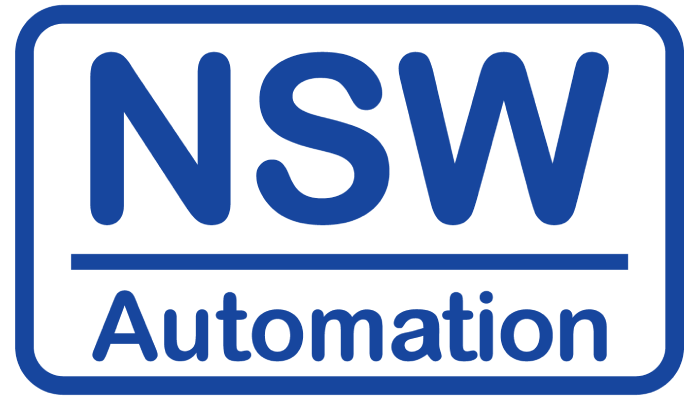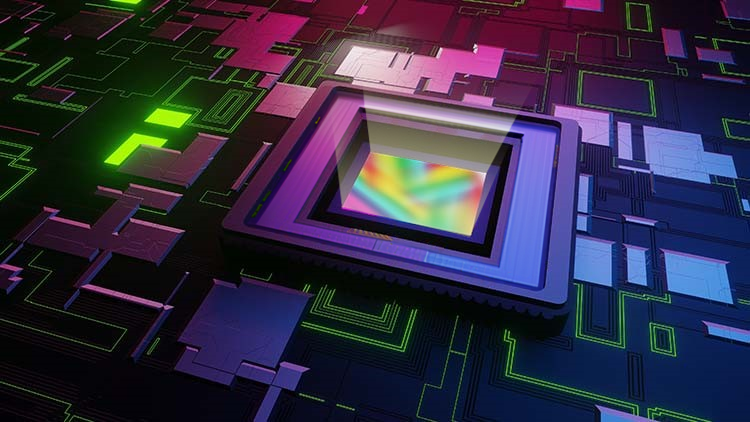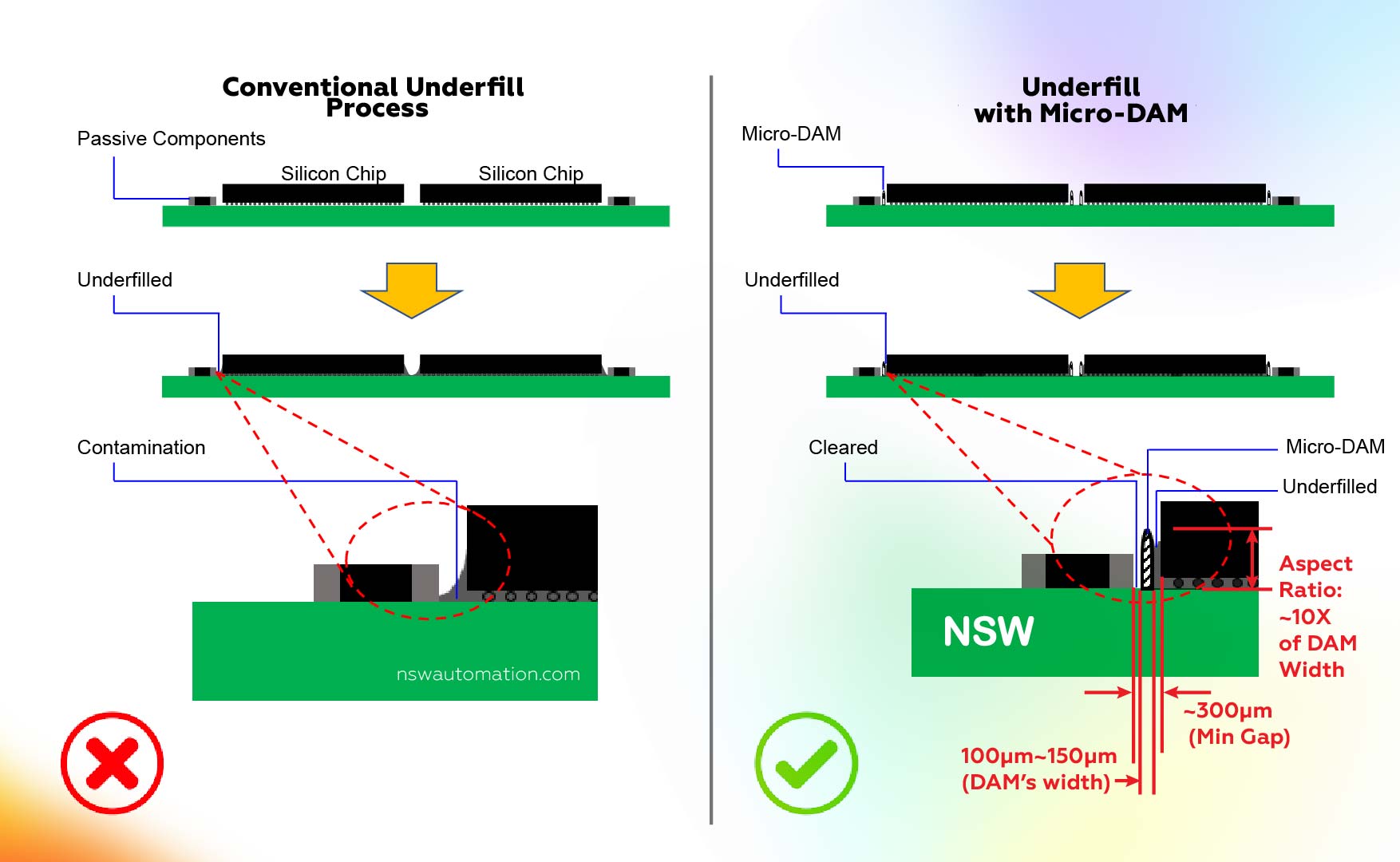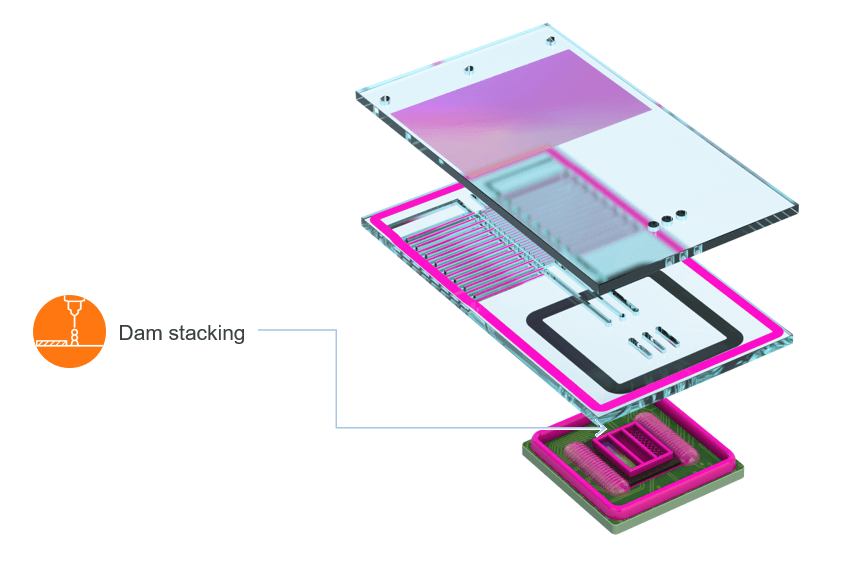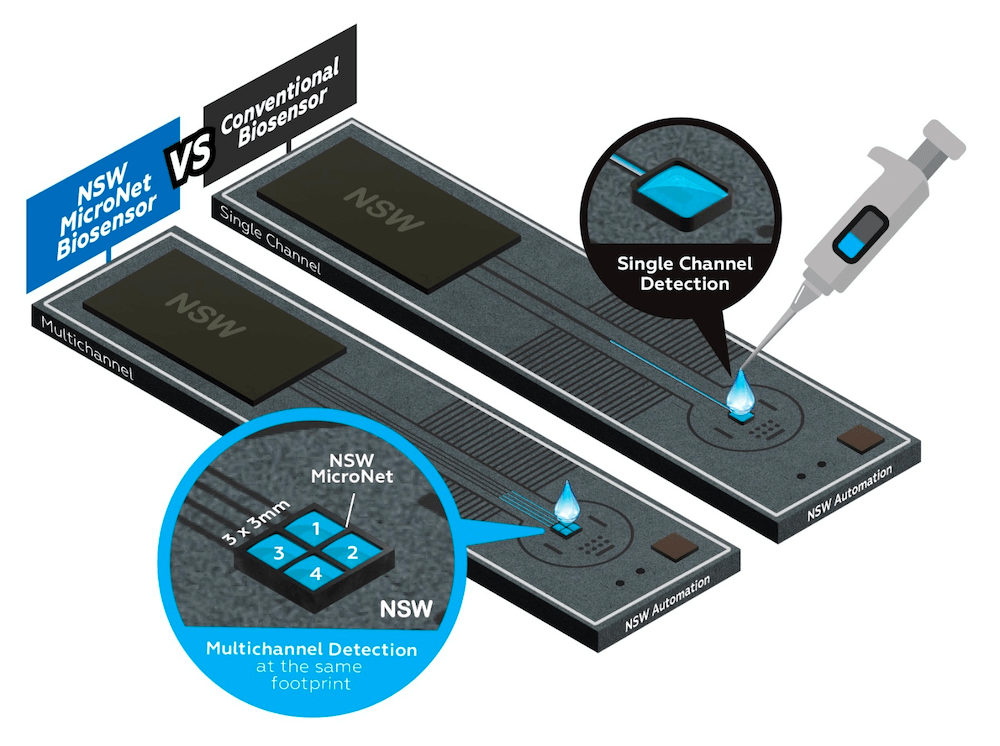Top 3 Vital Industrial Applications by Adaptive Micro-Damming Technology
By NSW Marketing Team. Last update on April 22, 2024.
Micro-damming as know as “Micro-DAM”, “Additive Structural Printing” or Micro Dam and Fill, is an adaptive microfluidic barrier printing technology. It unlocks a NEW realm for today’s microelectronic heterogeneous manufacturing, it’s a transformative solution that create limitless possibilities for devices miniaturization and advancement of product uniqueness.
Micro-DAM printing technology build high-aspect ratio microscopic structure onto a confined space of miniaturized devices via industrial grade material such as Ultraviolet-sensitive (UV) polymer. Printable surface includes micro-gaps between components, different height cavities, flat, curvy, protruded surface and etc. It created significant advantages for the revolutionary product design and manufacturing that amplifies market value.

Check out the video above for example of micro-dam (Additive structural “Printing”) in action.
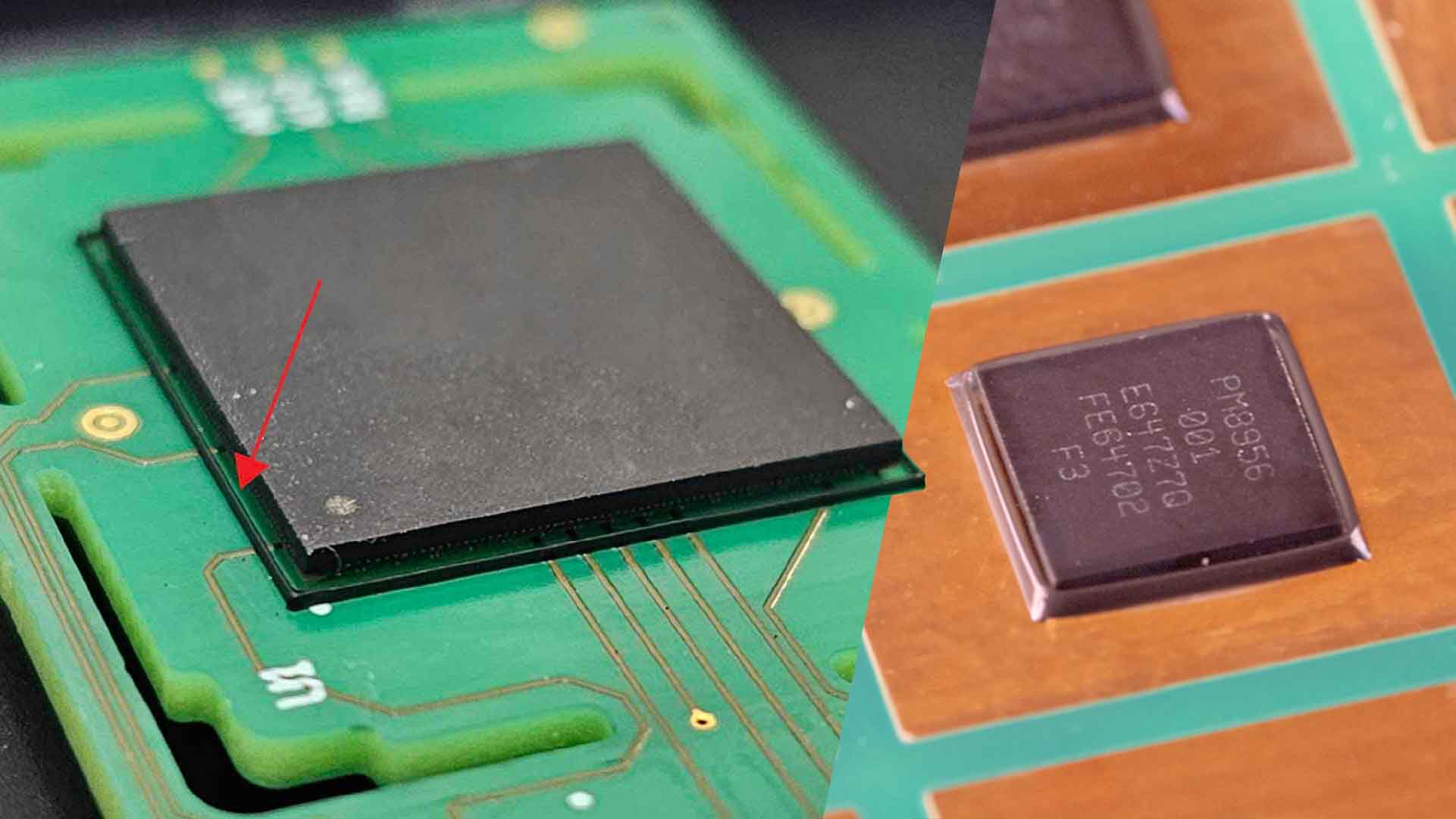
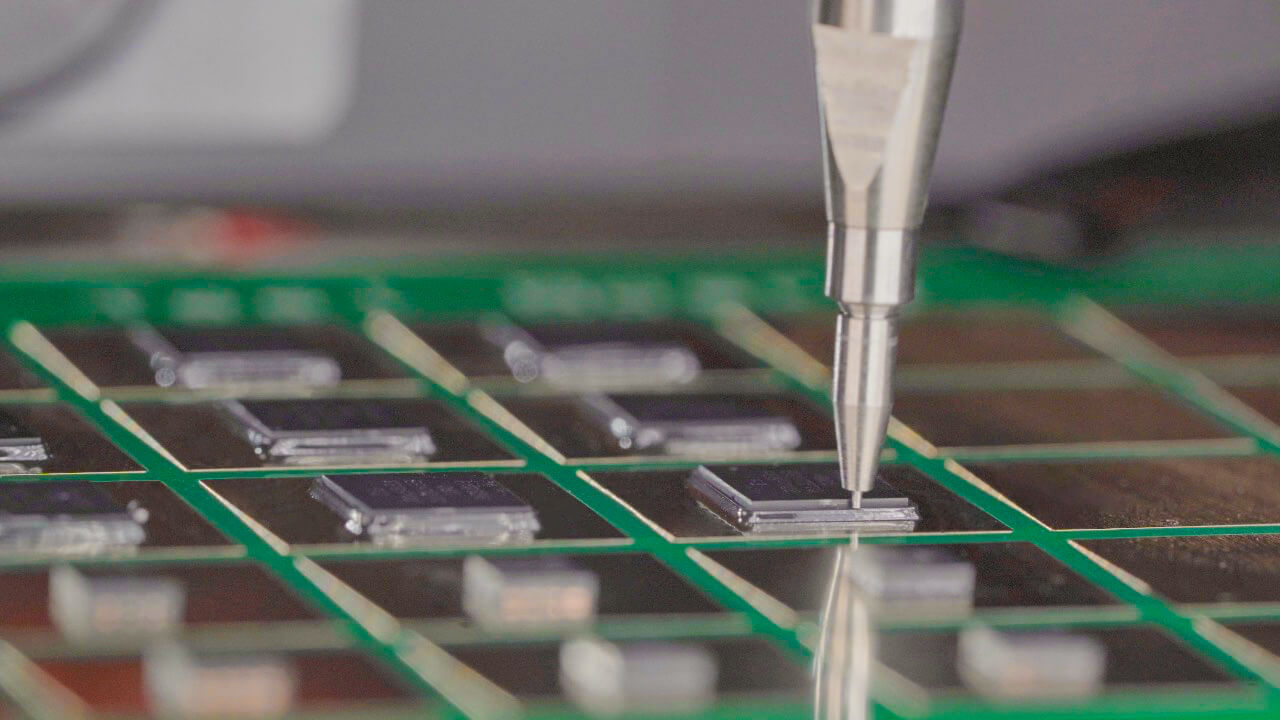
Brief Explanation – What is Micro-DAM?
It is a next-level liquid dispensing application for “printing” microscopic barriers – also known as “Micro Dam and Fill”. High viscosity liquid are stacked layers by layers to create a microstructure similar to a dam barries, these barriers confine and control the spread of liquids, underfill or fluids of a product.
Below are 3 examples of Micro-damming utilization:
1. Light Barrier in Photonics
Witness a tectonic shift of optoelectronics breakthrough, Micro-DAM unleash a groundbreaking market landscape in the photonics industry .
In optoelectronics, Micro-DAM apply as Light barriers on various applications, such as optical sensors and integrated photonics. These barriers ensure light signals are confined and directed into the desired pathways, preventing unwanted optical interference, enhancing the reliability and performance of devices. Additionally, Micro-DAM light barriers could also be utilized as “light splitter” for channeling light signals from single to multichannel.
For these reasons, more possibilities are expanded and it propels the industry into uncharted territory.
2. Dam Barrier for High-density Underfill. (Dam and Fill)
Micro-DAM unfolds a new horizon of microelectronics heterogeneous integration and packaging. It prints a microscopic “wall” to contain the underfilled material within a narrow components footprint to prevent undesirable production defects, such as components failure due to CTE (coefficient of thermal expansion) effects. The width of printed “wall” can be achieved as thin as 100um with a height of 10X aspect ratio at one go.
This technology pushes the boundaries of underfill limitation, it removes conventional packaging restrictions due to material behavior and it helps the industry to resolve long-term challenges in high-density products design and manufacturing.
The graphics below illustrates Micro-DAM Barrier vs Conventional underfill process and how Micro-DAM Barrier effectively contains the underfill material.
| Conventional underfill process: | Underfill with NSW Micro-DAM: |
| Unwanted contamination issue on high-density device caused by capillary effect of material. | Micro-damming serves as a miniaturized barrier, confining underfilled liquids in a designated footprint to prevent contamination and causing failures. |
3. Micro-DAM for Biotech Industry.
In the wake of pandemic, life-saving healthcare equipment demand has tremendously arised globally. The biotech industry is thriving for more game-changing solutions to fulfill today’s complex market requirement. Therefore, Micro-DAM printing technology plays a vital role for realizing innovative healthcare equipment solutions to cater for emerging market needs for the new biosensors industry.
Image credits: DELO Industrial Adhesives
Micro dams create microchannels and microchambers on biosensors to perform multiple test functions within a single device footprint. The printed micro structures are created by microlines and walls for the purpose of precisely confining and controlling liquid or air flow for the testing devices such as blood diagnostic devices, gas sensors…etc.
Left Image (above): Multiple channels in one footprint with NSW MicroNET. (Multiple Dams)
Right Image (above): Conventional biosensors, single channel fluid allow in one footprint.
Additional Opportunities – Employ for Microscale 3D Printing via industrial proven material
The world of manufacturing and 3D printing continues to push boundaries relentlessly. In this pursuit, Micro-DAMs and Microscale 3D Printing have emerged as transformative technologies.
The integration of industrial proven materials and microscale manufacturing has opened up exceptional material flow control at the microscale, supported by industrial proven materials that provide ultimate reliability during the microscale manufacturing process. This combination enables borderless possibilities for product printing.
Our Micro-dispensing technology can be employed in as 3D printer to “Print” high-resolution microscopic objects when conventional 3D printers cannot achieve fine details using regular filaments. Similarly, Micro-DAMs in small-scale 3D printing, are utilized to control the flow of printing materials, such as polymers or resins, which improves the accuracy and resolution of the printed structures.
The “printing” technology are reshaping and redefining the future of adaptive manufacturing.
Unlocking the Power of Specialized Materials in Micro-Dam Applications.
When it comes to microdispensing and creating precision dams, the choice of materials plays a crucial role. One of our partners in this field is Delo Industrial Adhesives. With their expertise in adhesives, they provide high-quality adhesive materials specifically designed for microdispensing processes.
Delo Industrial Adhesives‘s UV Adhesive enables the stacking of layers upon layers, forming the intricate dam required for precise fluid confinement.

Elevate Your Application with Cutting-Edge Micro-Damming Solutions from NSW Automation.
In conclusion, the application of micro-damming is pivotal across various industries. It offers precise control and confinement of fluids and materials within compact spaces, thereby enhancing reliability and ensuring accurate outcomes.
At NSW Automation, we take pride in providing state-of-the-art microdispensing solutions that are fully customizable for adaptive micro-damming and other adhesive fluid control needs. Our comprehensive range of dispensing machines is engineered to meet the exacting demands of micro-damming, providing you with unparalleled precision and control to achieve exceptional results for any micro applications.
A Reliable automated precision liquid dispensing robot should have the capability to handle a wide range of surface types, including flat (w/ or w/o warpage), flex, protruded, cavity, uneven, and curvy surfaces. If you ever find yourself in need of superior microdispensing solutions for your applications, NSW Automation stands ready to assist. Get in touch with us today and discover how our innovative microdispensing solutions can transform your processes, empowering you to reach new heights of success.
Contact us now for all your micro-damming needs and experience the difference firsthand.
